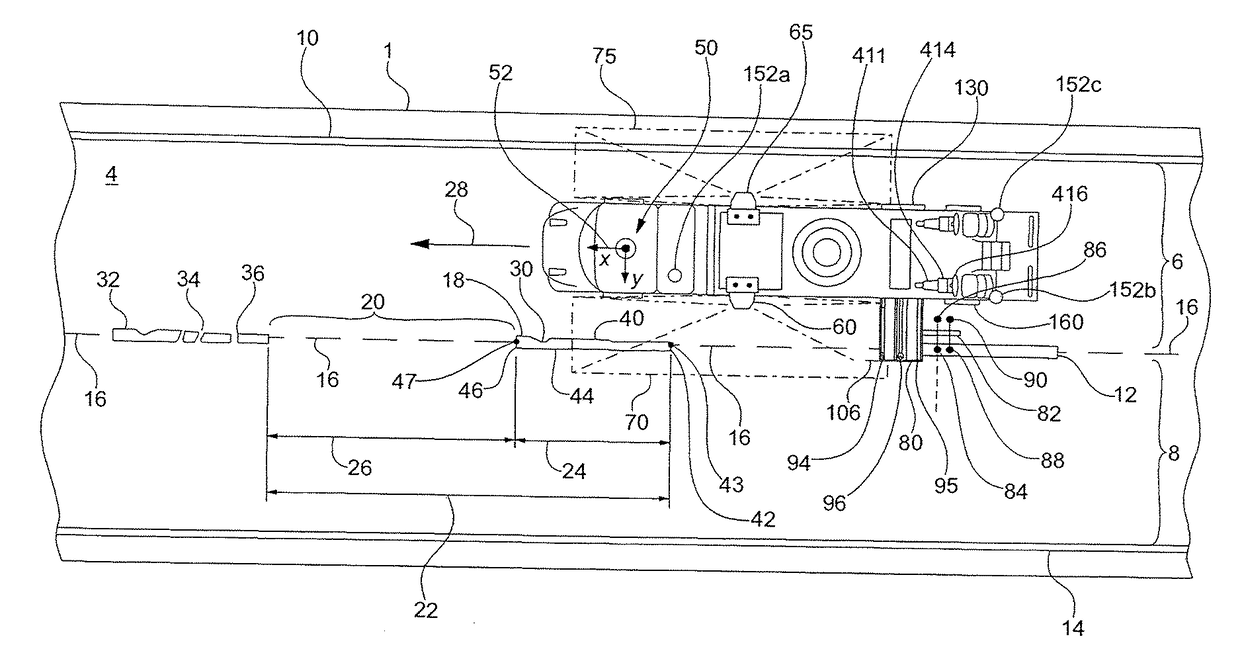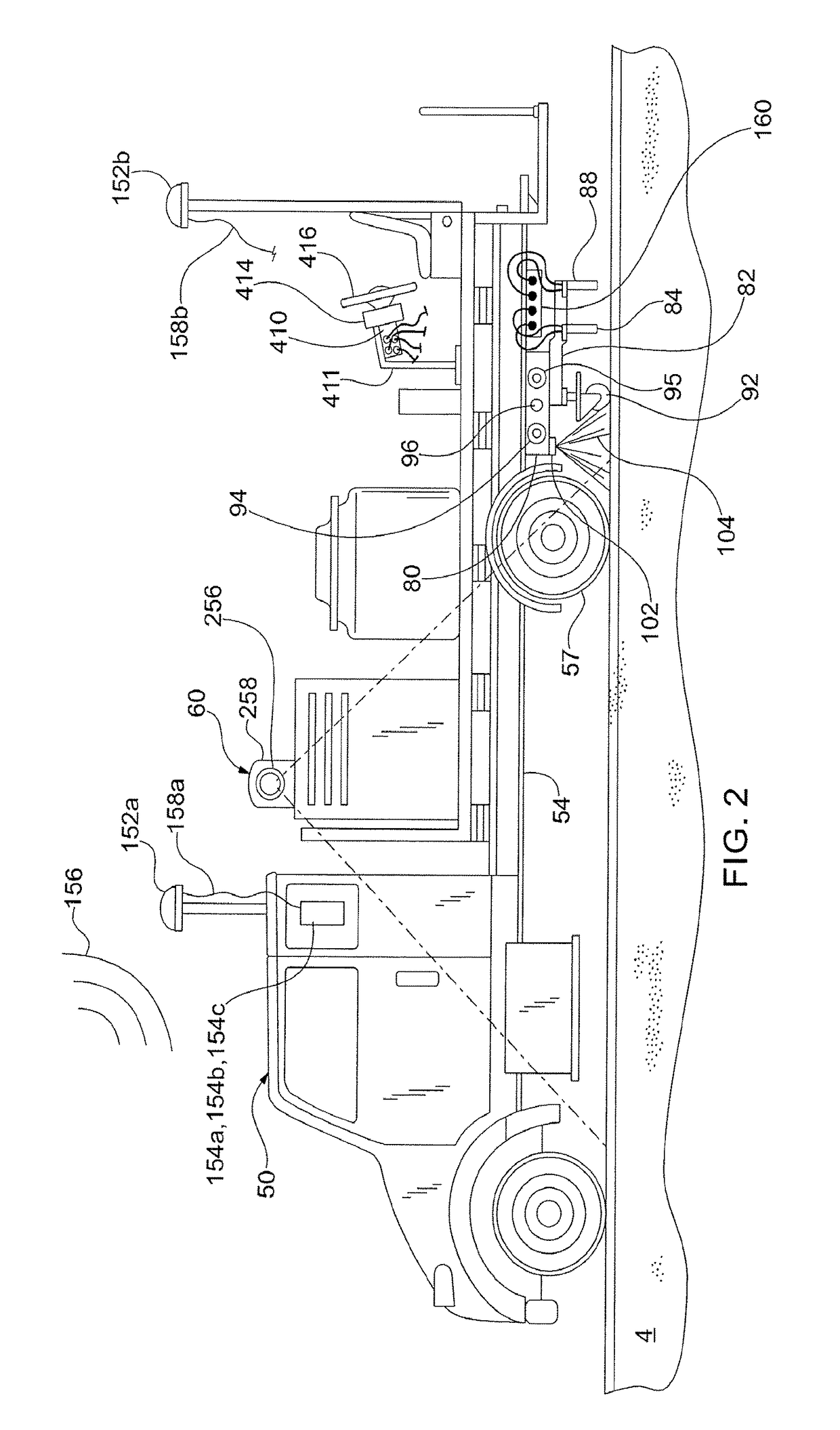Roadway marker control system
a control system and road marking technology, applied in fluid steering, roads, construction, etc., can solve the problems of affecting the safety of workers, affecting the visibility of traffic, and affecting the personal safety of workers, so as to reduce the error signal and reduce the error signal
- Summary
- Abstract
- Description
- Claims
- Application Information
AI Technical Summary
Benefits of technology
Problems solved by technology
Method used
Image
Examples
Embodiment Construction
[0081]The present invention provides roadway marking systems used for replicating previous roadway traffic lane demarcation lines onto a newly repaved or constructed roadway surface. In some embodiments, the roadway marking systems have an improved GPS-based control system to accurately control the positioning of the roadway mark material dispensing nozzles over a predetermined roadway mark path.
[0082]Referring now to the drawing, in which like reference numbers refer to like elements throughout the various figures that comprise the drawing, FIG. 1 shows a two lane roadway 1 having roadway surface 4 and conventional right and left traffic lanes 6 and 8 respectively, as commonly referred to in the United States. The right lane 6 is defined by continuous edge line 10 and a conventional center skip line 12. The left lane 8 is defined by a continuous edge line 14 and the center skip line 12. The traffic lanes 6 and 8 could have vehicle traffic flow in the same or opposite directions. It...
PUM
 Login to View More
Login to View More Abstract
Description
Claims
Application Information
 Login to View More
Login to View More - R&D
- Intellectual Property
- Life Sciences
- Materials
- Tech Scout
- Unparalleled Data Quality
- Higher Quality Content
- 60% Fewer Hallucinations
Browse by: Latest US Patents, China's latest patents, Technical Efficacy Thesaurus, Application Domain, Technology Topic, Popular Technical Reports.
© 2025 PatSnap. All rights reserved.Legal|Privacy policy|Modern Slavery Act Transparency Statement|Sitemap|About US| Contact US: help@patsnap.com



